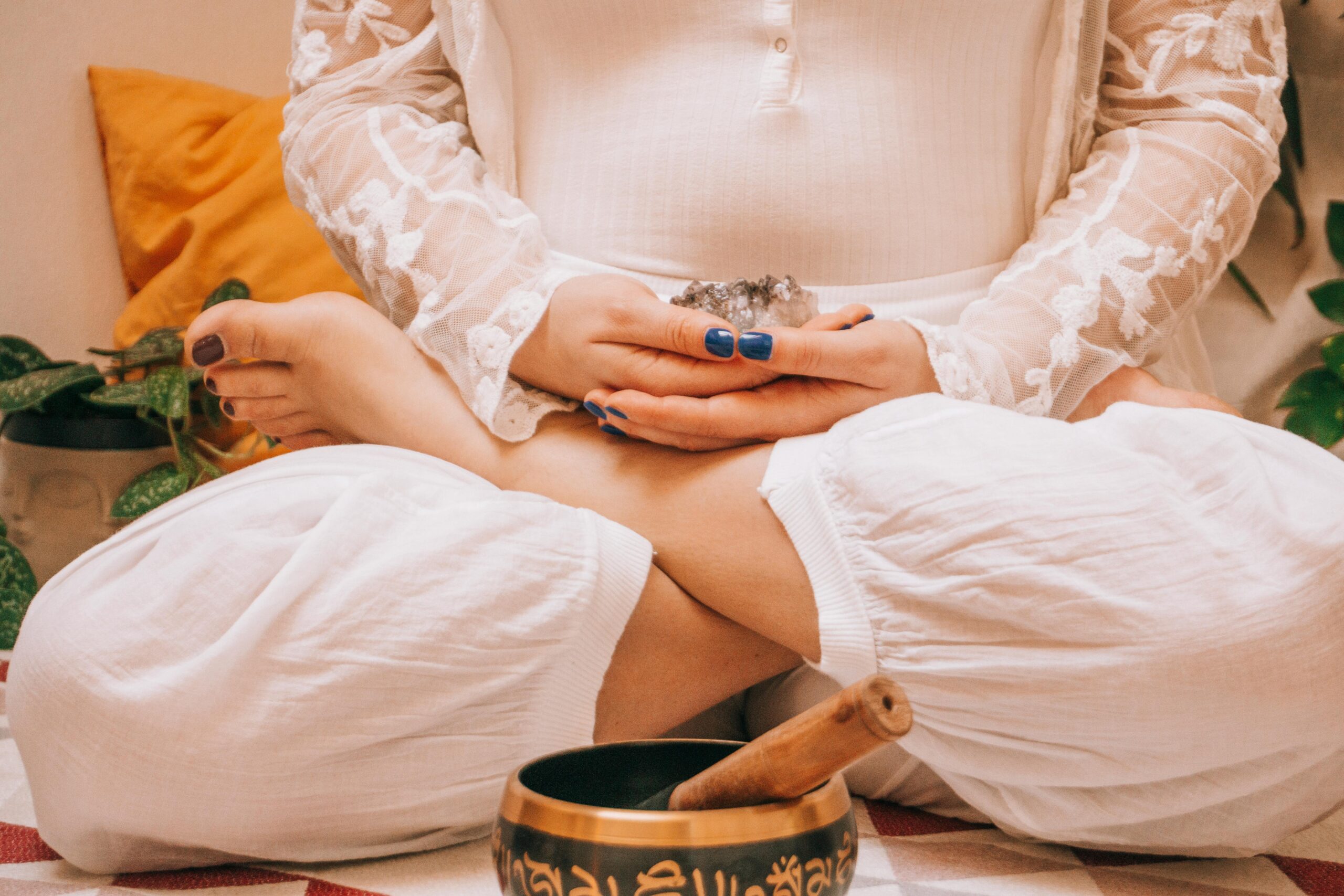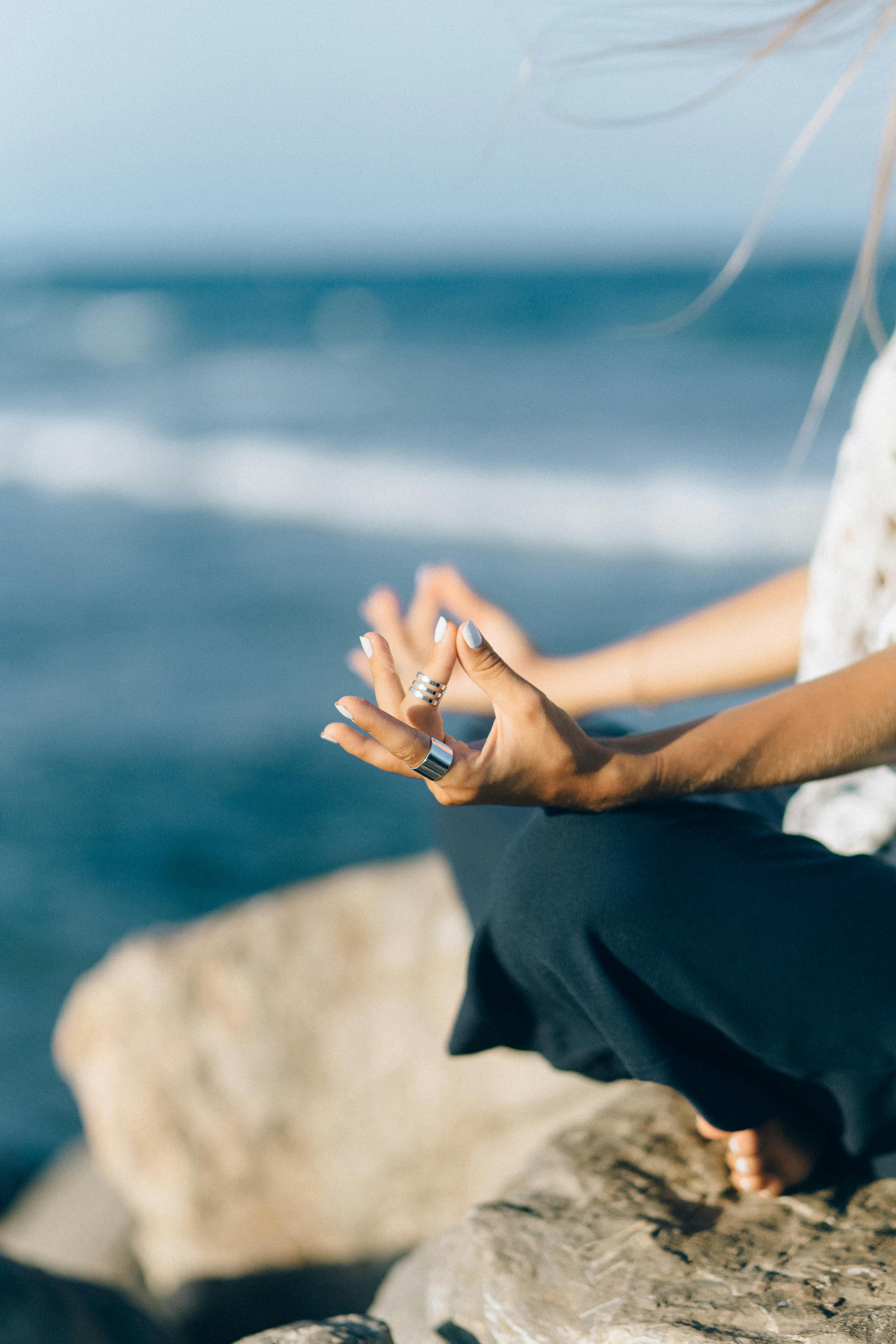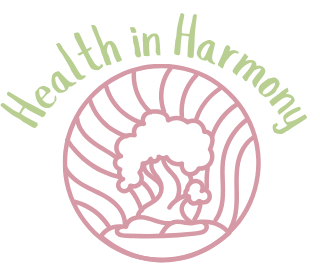
Rooted in Wellness – Aligned in Life
Healing Naturally. Living Fully.
Mental & Emotional
Well-Being

Holistic Health &
Natural Living

“Balance is not something you find. It’s something you create.”
— Jana Kingsford

Align Your Energy, Transform Your Life
Hi, I’m Faith, and this space is dedicated to helping you find balance in mind, body, and spirit. Here, I share mindful practices, holistic healing tips, and gentle ways to reconnect with yourself through journaling, breathwork, herbs, and emotional wellness. Whether you’re just starting your journey or deepening your path, this blog is your companion for living with intention, peace, and purpose.
Align Your Energy, Transform Your Life
- Embracing a Healthier Lifestyle: Small Changes for Big Impactby FaithIn today’s fast-paced world, maintaining a healthy lifestyle often feels like an overwhelming challenge. However, by making small, mindful changes, you can significantly enhance your overall well-being. Whether you’re looking to boost your physical health, mental clarity, or emotional balance, the journey begins with simple, actionable steps. ## The Power of Small Steps While grand resolutions can be inspiring, they often lead to burnout. Instead, focus on *incremental adjustments* that blend seamlessly into your daily routine. Here’s how small changes can lead to a healthier lifestyle: – **Achievability:** Smaller goals are easier to reach and sustain. – **Flexibility:** They allow you to adjust as you learn what works best for you. – **Motivation:** Achieving small milestones boosts confidence and encourages further progress. ## Nutrition: The Foundation of Health Eating well is crucial for maintaining energy levels and preventing chronic diseases. Here are some simple ways to improve your diet without drastic overhauls: ### 1. Prioritize Whole Foods Whole foods like fruits, vegetables, nuts, and whole grains are packed with nutrients. Try to incorporate these into every meal: – Replace refined grains with whole grains. – Snack on fruits instead of processed snacks. – Include a variety of colorful vegetables to ensure a range of nutrients. ### 2. Mindful Eating Mindful eating helps you enjoy your meals and recognize hunger cues: – **Slow Down:** Take time to chew thoroughly and savor each bite. – **Listen to Your Body:** Eat when you’re hungry, not out of habit or boredom. – **Portion Control:** Use smaller plates to help manage serving sizes. ## Exercise: Move More, Feel Better Regular physical activity is essential for both physical and mental health. However, you don’t need to spend hours at the gym. Here are some ways to incorporate more movement into your day: ### 1. Make It Enjoyable Choose activities you enjoy to make exercise feel less like a chore: – **Dance:** Whether at home or in a class, dancing is a fun way to stay active. – **Walking:** Take a brisk walk in your neighborhood or local park. – **Join a Class:** Try yoga, pilates, or any group activity that piques your interest. ### 2. Incorporate Movement into Daily Life Find opportunities to move more throughout your day: – **Take the Stairs:** Ditch the elevator whenever possible. – **Short Breaks:** Stand up and stretch if sitting for long periods. – **Active Commuting:** Walk or cycle to work, if feasible. ## Mental Wellness: Nurture Your Mind Mental health is equally important as physical health. Here are some ways to support your mental well-being: ### 1. Practice Mindfulness Mindfulness can reduce stress and improve focus: – **Meditation:** Spend a few minutes each day meditating. – **Deep Breathing:** Practice deep breathing exercises to calm your mind. – **Gratitude Journaling:** Write down things you’re grateful for to foster positivity. ### 2. Connect with Others Social connections are vital for mental health: – **Quality Time:** Spend time with friends and family. – **Community Involvement:** Join clubs or groups that align with your interests. – **Reach Out:** Don’t hesitate to seek support if you’re feeling overwhelmed. ## Sleep: The Unsung Hero of Health Sleep is critical for recovery and overall health. Prioritize sleep with these tips: – **Consistent Schedule:** Go to bed and wake up at the same time every day. – **Create a Restful Environment:** Keep your bedroom cool, dark, and quiet. – **Limit Screen Time:** Avoid screens an hour before bed to improve sleep quality. ## Final Thoughts Embracing a healthier lifestyle doesn’t require drastic changes. By integrating small, meaningful adjustments into your daily routine, you can improve your physical, mental, and emotional health. Remember, the journey to wellness is a marathon, not a sprint. Celebrate each small success, and stay committed to making positive choices. Your future self will thank you!
- How Breathwork Can Improve Mood & Reduce Stress
 by Faith
by FaithFor most of my life, I never really thought about my breath. It was just something that happened automatically—inhale, exhale, repeat. But during one particularly stressful season of my life, a friend introduced me to breathwork. I was skeptical at first. How could something as simple as breathing help with anxiety, overwhelm, or emotional heaviness?
And then I tried it.
That first session—just ten minutes of conscious breathing—left me feeling clearer, lighter, and more present than I had in weeks. I didn’t just feel “relaxed.” I felt like I had come home to myself.
Since then, breathwork has become one of my go-to practices for calming my mind and regulating my emotions. It’s free, always available, and incredibly powerful.
Let me walk you through how breathwork works, why it helps so much with mood and stress, and how you can start using it in your daily life—even if you’ve never tried it before.
What Is Breathwork?
At its core, breathwork is the practice of intentionally changing the way you breathe to support your mental, emotional, and physical state. There are many techniques, from slow diaphragmatic breathing to more intense methods like holotropic breathwork or Wim Hof-style breathing.
The key is awareness. When we breathe with intention, we activate parts of our nervous system that shift us out of “fight or flight” and into a state of calm and balance.
How Breathwork Helped Me During Stressful Times
I started using breathwork when I noticed how easily I got stuck in my head—racing thoughts, overthinking, and chronic stress. When I began incorporating just a few minutes of deep breathing into my day, things started to change.
Here’s what I noticed:
- I felt more grounded and centered during chaotic days.
- My sleep improved—I wasn’t lying awake, stuck in mental loops.
- I became more emotionally aware and less reactive.
- I had a tool I could use anywhere, anytime—no app or equipment needed.
Breathwork became a lifeline in moments of anxiety or emotional overwhelm. It reminded me that I could create calm from within.
Easy Breathwork Techniques to Try
You don’t need an hour or a teacher to get started. Here are a few simple techniques I’ve used that you can try right now:
1. Box Breathing (4-4-4-4)
- Inhale for 4 seconds
- Hold for 4 seconds
- Exhale for 4 seconds
- Hold for 4 seconds
Repeat for 3–5 minutes. This is great for calming nerves and focusing your mind.
2. 4-7-8 Breathing
- Inhale for 4 seconds
- Hold for 7 seconds
- Exhale for 8 seconds
This helps activate your parasympathetic nervous system and is especially helpful before bed.
3. Alternate Nostril Breathing (Nadi Shodhana)
- Gently close your right nostril with your thumb, inhale through the left
- Close the left nostril with your ring finger, exhale through the right
- Inhale through the right, then switch and exhale through the left
Repeat for 2–5 minutes. This one helps balance energy and calm your mind.
Final Thoughts
Breathwork has taught me that healing doesn’t have to be complicated. It doesn’t require a fancy studio or a long commitment. Sometimes, all it takes is a few conscious breaths to shift your mood, calm your mind, and reconnect with your body.
If you’ve been feeling scattered or stressed lately, give breathwork a try. Start small. Just a few minutes in the morning, before a meeting, or when you’re lying in bed. Your breath is always with you—use it as a tool to come back to yourself.
- The Benefits of Holistic Healing Practices: What Changed My Life
 by Faith
by FaithWhen I first heard the phrase “holistic healing,” I thought it sounded vague and a little too “woo-woo” for me. I was used to traditional approaches—prescriptions, symptom-focused solutions, and quick fixes. But the more I tried to patch up my stress, fatigue, and emotional overwhelm with temporary solutions, the more I realized something deeper was calling for my attention.
I didn’t just want to feel better for a moment—I wanted to feel balanced, grounded, and whole. That’s when I started exploring holistic healing.
Over time, I’ve worked with energy healers, tried acupuncture, explored sound therapy, and incorporated herbs, breathwork, and intentional movement into my daily life. Each practice offered something unique, but together, they transformed how I connect with my body, manage stress, and process emotions.
If you’re curious about holistic healing but not sure what to expect or where to start, let me share the real-life benefits I’ve experienced—and why I believe this path can help anyone feel more aligned.
1. It Treats the Whole You—Not Just the Symptoms
One of the most powerful aspects of holistic healing is its emphasis on treating the root cause of imbalance, not just the outward symptoms. Instead of isolating a single issue (like headaches or anxiety), holistic practices look at the bigger picture—your physical, emotional, spiritual, and energetic health.
When I went to my first Reiki session, I was dealing with chronic stress and tension. I thought I’d just walk away feeling relaxed. But I left with more than that—I felt clear. As if something heavy had lifted. The practitioner helped me see how my emotional stress was manifesting in my body, and I realized how disconnected I’d become from my own needs.
Holistic healing opened up space to ask, “What is my body trying to tell me?” And often, the answers surprised me.
2. You Become an Active Participant in Your Healing
In the past, I used to rely on doctors or external fixes to “make me better.” But holistic healing gently shifted that mindset. Suddenly, I wasn’t just a passive patient—I was a partner in my healing journey.
Whether it was practicing breathwork, using herbs for digestion, or learning acupressure points for tension, I felt empowered. These weren’t one-time fixes—they were tools I could use anytime, anywhere.
This empowerment changed everything. It reminded me that healing isn’t about outsourcing your power—it’s about coming back to your intuition and giving your body what it truly needs.
3. You Build a Deeper Connection With Your Body
Through holistic practices like yoga, sound baths, and energy work, I started developing a relationship with my body based on listening, not control. I learned to slow down, pay attention to sensations, and trust when something didn’t feel right.
This body awareness helped me make better choices in all areas of my life—from food and rest to relationships and boundaries. It’s a subtle but powerful shift: instead of ignoring or overriding my body, I began honoring it.
4. Emotional Healing Becomes a Natural Part of the Process
What surprised me most about holistic healing was how it gently invited emotional release. I didn’t realize how much emotional energy I was holding until I tried things like breathwork and sound therapy. Tears would come, tension would release, and I’d feel lighter without needing to explain or analyze every feeling.
We carry so much in our bodies—grief, anxiety, fear—and these practices give us safe, healthy ways to process them. That alone is worth everything.
5. You Feel More Balanced, Even in a Chaotic World
Life doesn’t slow down, but holistic healing gives me tools to move through it more gracefully. I still experience stress, but now I know how to ground myself. I have rituals that soothe me, practices that reset me, and a deeper trust in my own resilience.
There’s no one-size-fits-all approach, and that’s the beauty of it. Whether you explore Reiki, herbs, acupuncture, meditation, or just start with deep breathing—you’re taking a powerful step toward balance.
Final Thoughts
Holistic healing isn’t a trend—it’s a return to what many cultures have known for centuries: that true wellness is about treating the whole person. It’s not about being perfect or fixing everything overnight. It’s about creating space for healing on every level—physical, emotional, and spiritual.
This path has changed my life, and I believe it can support yours, too—gently, naturally, and with deep wisdom.
- How to Create a Daily Routine That Balances Mind, Body & Spirit
 by Faith
by FaithFor years, I lived in survival mode. Mornings started with stress, days felt chaotic, and evenings left me feeling drained. I was “busy” but never truly aligned. It wasn’t until I began intentionally creating a daily routine that honored all parts of me—my mind, body, and spirit—that I started to feel a deeper sense of balance and ease in my life.
If you’ve been feeling scattered, disconnected, or stuck on autopilot, building a simple and nourishing routine can be a powerful way to come back to yourself. And no, I’m not talking about rigid schedules or overwhelming to-do lists. I’m talking about rhythms that support your energy, rituals that ground you, and habits that help you thrive.
Here’s how I slowly created a routine that actually supports my well-being, and how you can do it too—one gentle step at a time.
1. Start With Intention, Not Perfection
I used to think creating a routine meant packing my day with “productive” habits: exercise, meal prep, meditation, journaling, hydration, eight hours of sleep… the list went on. It felt more exhausting than empowering.
So instead, I asked myself: What do I need to feel good today?
The answer changed daily. Some days I needed movement. Other days, quiet. But what remained consistent was the intention: to move through my day consciously, not reactively.
Before anything else, I encourage you to get clear on why you want a balanced routine. Is it to reduce anxiety? Reconnect with yourself? Improve your physical health? Anchor to that intention and let it guide you.
2. Ground Your Morning in Presence
Mornings set the tone for everything that follows. I used to reach for my phone the second I opened my eyes—and I’d already feel behind. Now, I begin my mornings with just 10–20 minutes of stillness.
Here’s what my current morning routine looks like:
- Hydration – A glass of warm lemon water or herbal tea
- Breathwork – 5 minutes of deep belly breathing or alternate nostril breathing
- Journaling – A quick brain dump or 3 things I’m grateful for
- Movement – Gentle stretching or a few yoga sun salutations
It’s simple, flexible, and more about being than doing. These small acts remind my nervous system that I’m safe, grounded, and in control of my energy.
3. Nourish Your Body Intuitively
Food is a form of self-care, but I used to rush through meals or eat whatever was convenient. Now I ask myself: What would feel supportive to my body today?
That doesn’t always mean a perfectly balanced plate. Sometimes it’s a smoothie. Sometimes it’s something warm and comforting. But the goal is to listen.
I also try to move my body in ways that feel joyful—not punishing. Some days that’s a long walk outside, other days it’s dancing in my living room. The key is to stop treating wellness like a checklist and instead treat it like a relationship—with yourself.
4. Make Space for Mental Clarity
We take in so much stimulation each day—news, notifications, tasks, conversations. It’s no wonder our minds feel cluttered.
One of the most powerful changes I’ve made is creating quiet pockets throughout the day to mentally reset. Sometimes that looks like:
- A midday mindfulness break
- A quick journaling session to unload mental noise
- A digital detox for an hour or two in the evening
These moments help me re-center and tune into what’s really going on beneath the surface. Your mind needs care just like your body does.
5. Feed Your Spirit—Whatever That Means to You
Spiritual nourishment doesn’t have to mean meditation on a mountaintop. For me, it’s often lighting a candle, pulling an oracle card, reading a soul-nourishing book, or sitting quietly in nature.
Ask yourself: What helps me feel connected to something bigger than myself? That could be prayer, creativity, nature, music, or ritual.
Even five minutes a day spent on something that lights up your spirit can have a huge impact.
6. Close the Day With Gratitude and Reflection
Evenings are sacred. Instead of crashing into bed with a racing mind, I’ve started treating my nights like a gentle landing. I do a quick reflection:
- What went well today?
- What do I want to release before tomorrow?
- How can I celebrate myself, even in small ways?
Sometimes I write it down, sometimes I say it out loud. But ending the day with presence and gratitude helps me sleep better and wake up more centered.
Final Thoughts
Creating a daily routine that balances your mind, body, and spirit doesn’t happen overnight. Mine is still evolving—and probably always will be. The goal isn’t perfection. It’s alignment.
When we care for ourselves holistically, we show up more fully in every area of life. We begin to move through the world with more calm, clarity, and compassion.
If you’re ready to feel more grounded and intentional in your days, start small. Choose one or two practices and build from there. Your routine should serve you, not the other way around.
Here’s to creating a life that feels like harmony—one day at a time.
